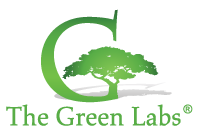What are Anthocyanins, Anthocyanidins, and Proanthocyanidins (condensed tannins)?
Much has been studied about the functions of secondary metabolites on plants. Flavonoids are a broad group of natural products that have received considerable attention in the scientific area due to their important pharmacological properties
It is considered that flavonoids are the response that plants have developed in order to adapt to intense ultraviolet radiation.1
The abundant flavonoid hydroxyl groups of flavonoids easily bind to protein surfaces, turning into potent inhibitors of certain enzyme systems.2,3The colors produced by the flavonoids in fruits and flowers attract butterflies and bees for pollination purposes and predators to help disperse the seeds.The bitter taste of some flavonoids can repel worms and herbivores that feed from leaves. In addition, many flavonoids provide plants with protection against bacteria and fungi.4
Within the broad group of flavonoids, the anthocyanins and proanthocyanidins are highlighted due to their important biological activities and nutraceutical applications.5Theanthocyanins (word derived from Greek, anthos: flower and kyáneos: blue) are pigments of the flavonoid type that provide the red, blue, and violet colors to plants.
Chemically, the anthocyaninsare defined as soluble glycosides of anthocyanidins. In nature, the strategy to increase water solubility of a phytochemical is through carbohydrate–binding.The phytochemicalcarbohydrate free isknown as aglycone.6
The anthocyanidins are aglycones, that once bound to carbohydrate via a β-glycosidic bond, producingwater solubleanthocyanins. Aglycones are rarely found in food, unless a degradation process occurs.7
Anthocyanin molecule is represented by the 2-phenyl-benzopyrilium salt of flavylium ion, formed by the benzopyrilium group (A) and the phenolic ring (B).
Carbohydrates commonly associated to anthocyanidins are glucose and rhamnose, followed by galactose, xylose, arabinose, gentiobiose, rutinose, and sophorose. Until now, twenty anthocyanidins are known to mankind,from which, pelargonidin, cyanidin, delphinidin, peonidin, petunidin, and malvidin have nutraceutical interest. The names of these anthocyanidinsare derived from plant where they were initially isolated. The union of these anthocyanidins (aglycones) with different carbohydrates produces around 150 anthocyanins.8
Anthocyaninsare found mainly in flowers, fruits, leaves, and cereal grains. Its function is to protect the plant from UV light. Anthocyaninsare considered pigments because they are molecules that can absorb photons energy in the visible spectrum through of their systems of conjugated double bonds, hence, presenting a color.
The color of each anthocyanin depends on the number and orientation of methoxyl and hydroxyl groups. It has been observed that increased methoxylation produces red color and increased hydroxylation produces blue color.
The other group of phytochemicals chemically related toanthocyanins corresponds to proanthocyanidins, also known as condensed tannins. Ferns and fern allies (Pteridophyta) are the oldest group of plants known to produce proanthocyanidins (also called leucoanthocyanidins).
Proanthocyanidins are polymers formed by anthocyanidins units. It is believed that one of the functions of tannins in plants is the defense against bacterial and fungal pathogens and herbivores.11Proanthocyanidinsare also found in high concentrations in the seeds and skins of grapes, in blueberries and other berries. Proanthocyanidins as well asanthocyanins have potent antioxidant and antibacterial activity and the ability to inhibit the adhesion of bacteria to the urinary tract’s mucose.12,13
Traditionally blueberries are used as preventive and treatment of urinary tract infections. In recent years, studies on the biological activity of anthocyanins and proanthocyanidins have also shown antitumor potential in various types of cáncer.14,15
_
_
The information provided here is intended to provide updated knowledge about the importance of food for a healthy life. It is not a guide to self-medication. Professional advice is recommended for any decision related to food. Nutritional needs vary from person to person depending on age, sex, health status and the total diet.
_
Copyright © 2015 The Green Labs LLC. No reproduction in whole or in part without written permission. All Rights Reserved. All trademarks and product images exhibited on this site, unless otherwise indicated, are the property of The Green Labs LLC and Affiliates. IMPORTANT: Information presented in this website is only for educational purposes. We do not intend to offer medical advice for various pathologies and has not been approved by the FDA or any Health Ministry. For health problems always seek professional medical council. The comments or articles on this website and our marketing material have not been evaluated by the FDA. Information presented in this website does not intend to prevent, treat, diagnose, or cure any disease. All images on this media are owned by The Green Labs LLC and / or the original licensed. The content of these images does not mean that all the people endorse our products or services. Supplement’s information of this material have been provided by the product manufacturer.






